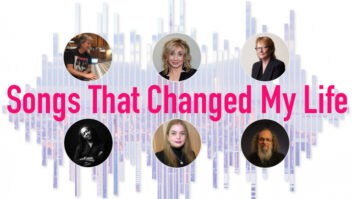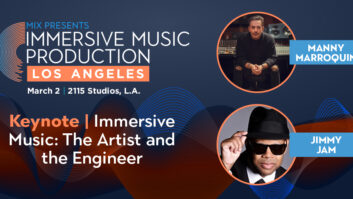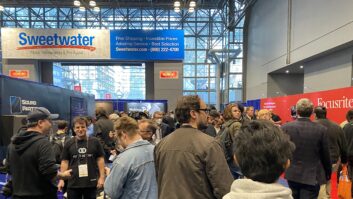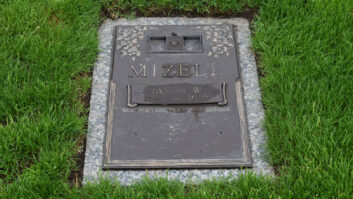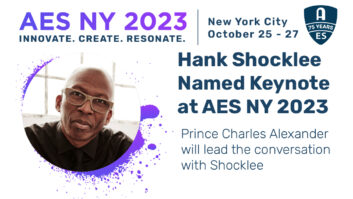Jamming at AES were producer Jimmy Jam (center) with AES executive director Bob Moses (left) and AES 135th Convention Chair Jim Anderson (right).

New York, NY (October 22, 2013)—The annual AES Convention offers lots of interesting events, but one of the most popular this year was Friday’s Lunchtime Keynote, which found legendary producer Jimmy Jam holding court, informing and entertaining hundreds of attendees with the broadly titled “The Current and Future Direction of the Recording Process from an Artist, Engineer and Producer’s Perspective.”
The five-time Grammy winner, who with his partner, Terry Lewis, has created hits for the likes of Janet Jackson, Mary J. Blige, Celine Dion, Kanye West, Sting, Chaka Kahn, The Human League, Usher, Celine Dion, Mariah Carey, Robert Palmer, Michael Jackson and others, offered as many laughs as he did insights.
Those who don’t know history are doomed to repeat it, so Jam shared many of his experiences coming up in the music business, from going to grade-school music class with Prince, to getting his first gig as a professional musician, drumming for his father’s band at age 12 (“My mother was my first agent…she said, ‘You can’t give him $5; you have to pay him like any other drummer.'”).
A recurrent theme in the largely off-the-cuff talk was that technology has to serve the music and the song, and not the other way around, as when Jam related the “revelation” of working with two 24-track tape machines linked together at Larrabee Studios in 1983 (“48 tracks? We can stack vocals for days!”) or not getting too in-depth with keyboard settings (“I did an interview with Keyboard Magazine [about Janet Jackson’s Control album] and told them I was using a Mirage, which was a sampling keyboard-its sampling rate was horrible and the sounds were horrible, but it was what sounded right to me. He looked at me and said, ‘Don’t you go in and tweak the sounds?’ I said, ‘Nah, I don’t really do that. Don’t they pay experts to do that at the factory?’).
Jam also discussed his involvement with The Recording Academy Producers & Engineers Wing and its “Give Fans the Credit” initiative, a campaign that aims to help enhance fans’ discovery of new music by ensuring that all music creators are credited for their work on digitally released recordings. “When I grew up, I was a liner note-reader,” he explained. “Now we’re in what we call the Information Age, and credits may be the only [piece of information] that used to be around that doesn’t exist now. The reason I’m even doing what I’m doing as a writer and producer is because of growing up looking at liner notes.”
If liner notes have largely vanished, Jam has not—in fact, once his keynote was over, he didn’t vanish from AES either. Saturday found him participating as part of the Grammy Soundtable, which featured an all-star panel honoring the late Phil Ramone. Other panelists included Frank Filipetti, Leslie Ann Jones, Bob Ludwig, Elliot Scheiner, Al Schmitt, Peter Chaikin and BJ Ramone, among many others. Getting even more into the thick of things, Jam also sat down with pro audio guru (and Pro Sound News columnist) Craig Anderton for an hour-long Q&A at the convention’s wildly successful Project Studio Expo on the exhibit floor Friday night.

